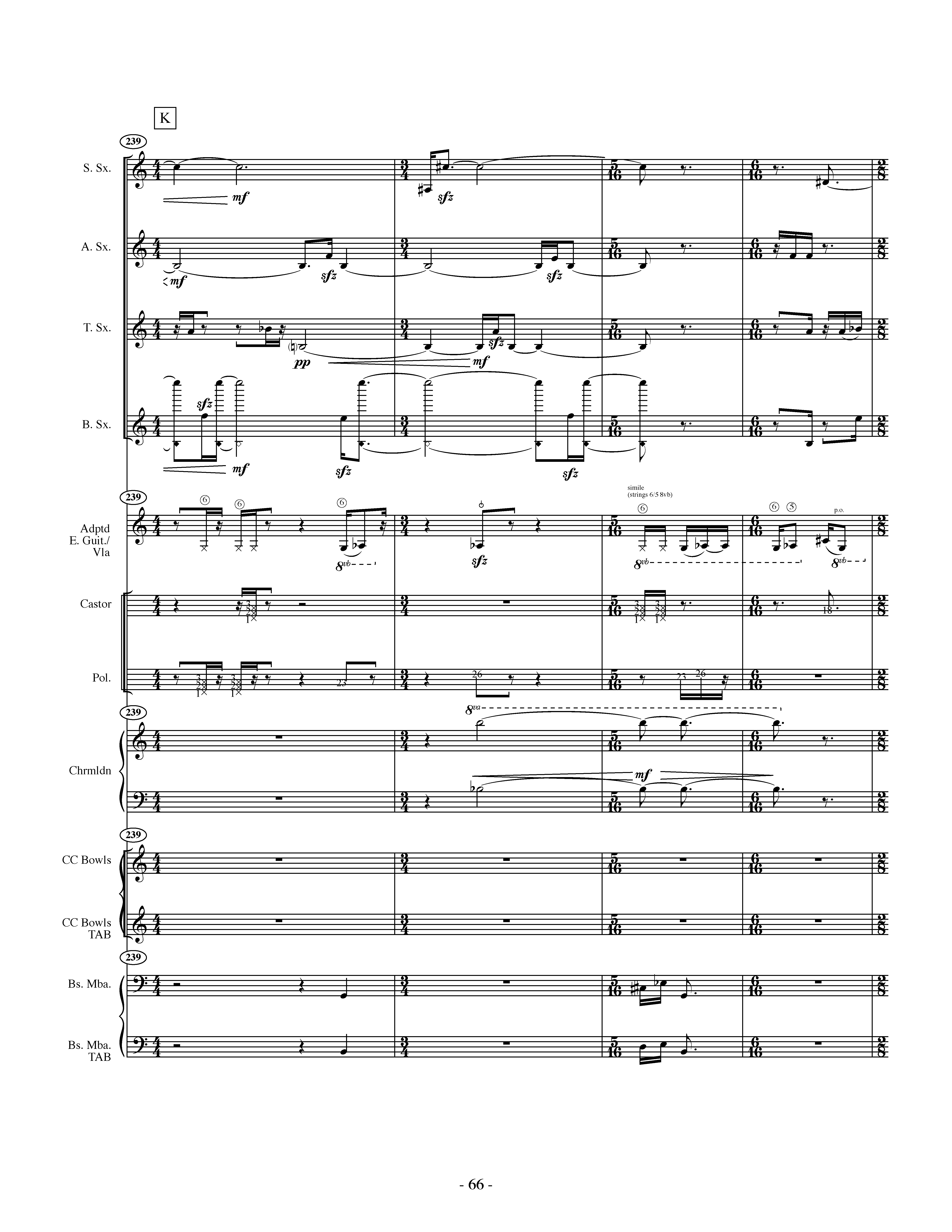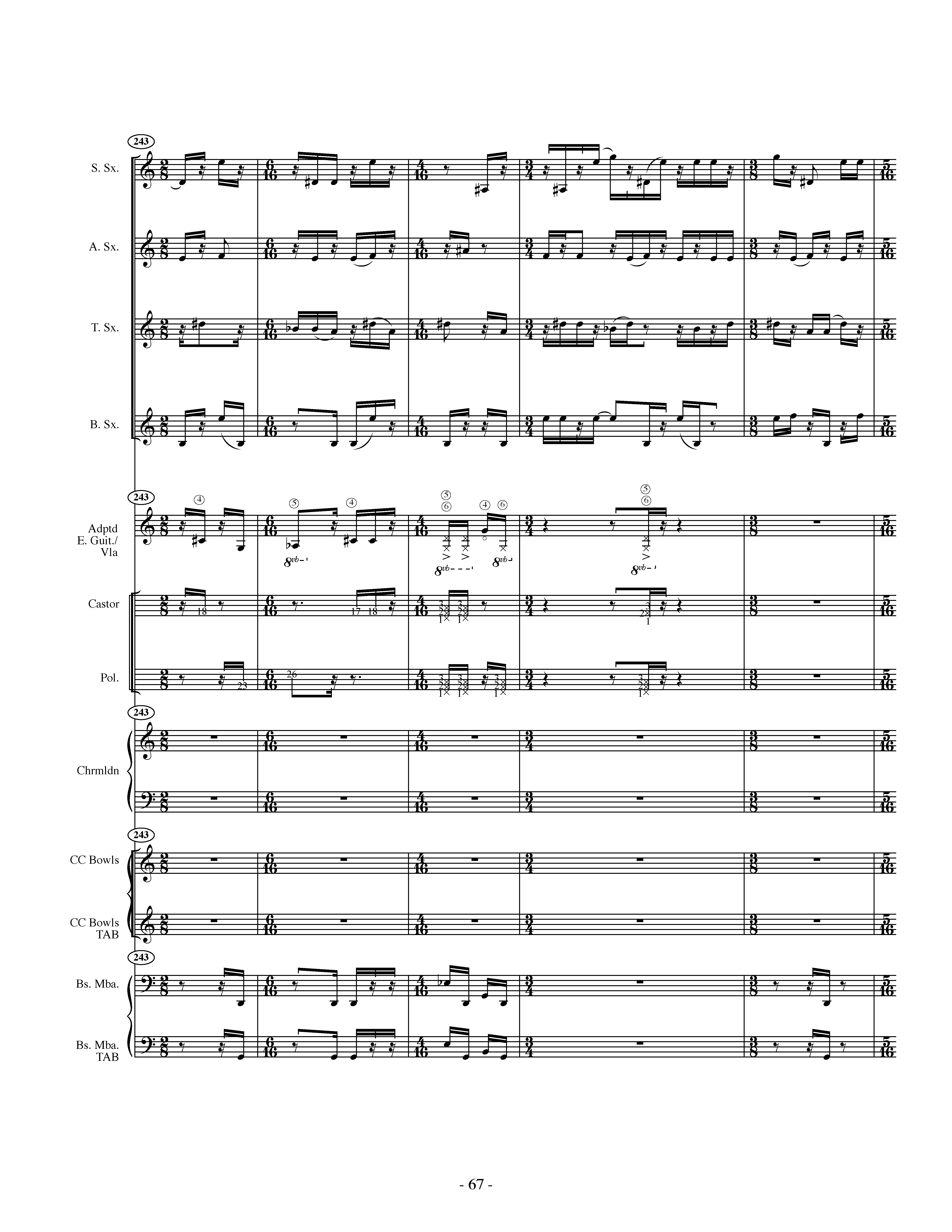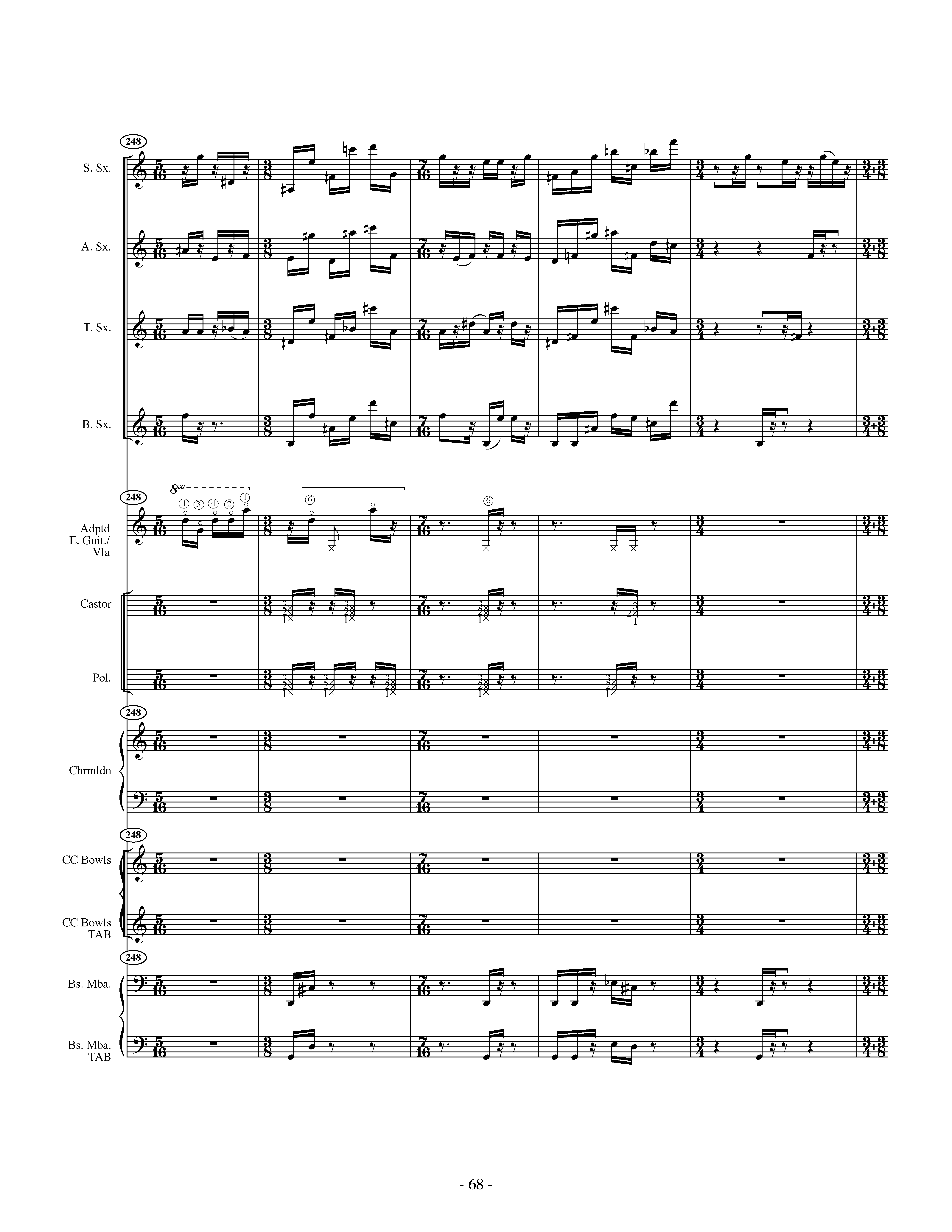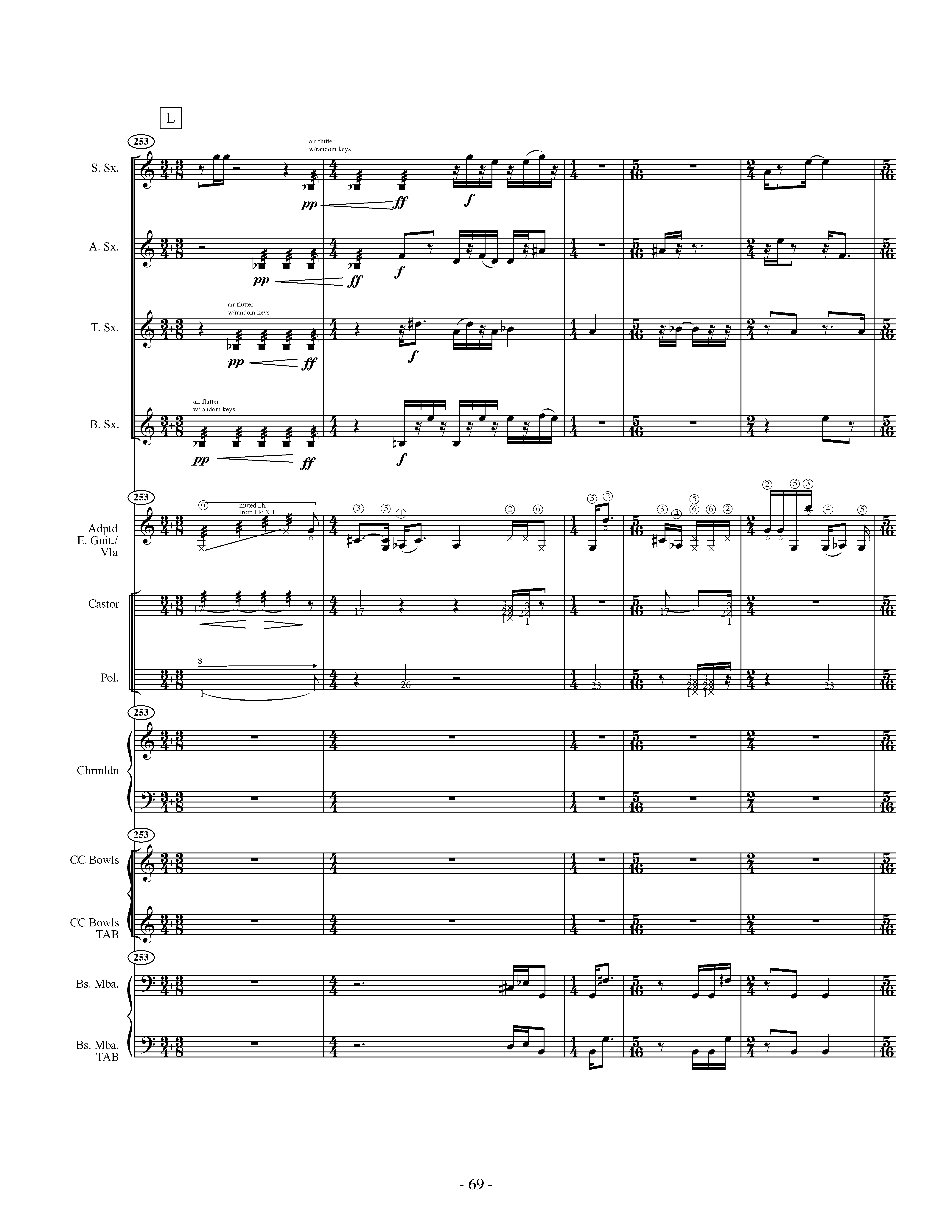Ken Ueno
Future Lilacs
for saxophone quartet and partch instruments
(2016)| Duration | 20' |
|---|---|
| Commission | Commissioned by PRISM Quartet, Inc. with support from the Pew Center for the Arts and Heritage and the MAP Fund |
| Premiere | June 11, 2016; Kimmel Center for the Performing Arts, Perelman Theater, Philadelphia, PA; PRISM Saxophone Quartet and the Partch Ensemble |
| Instrumentation | Saxophone Quartet (Soprano, Alto (doubling Hookah Sax) and Partch Instruments (Adapted Electric Guitar, Adapted Viola, Castor, Pollux, Chromelodeon, Cloud Chamber Bowls, Bass Marimba) |
| Publisher | PSNY |
Media
Program Note
Ken Ueno’s work derives from the intersection of many strands of thought and experience, distilled to the dynamic interplay of the mental/aesthetic and the physical (if these can be said to be at all separate). His music achieves much of its particular energy and heat from the interpretation by thoughtful, creative musicians of his sometimes highly abstract, sometimes strikingly earthbound source ideas. His body of work ranges from intricately scored opera and symphonic works to completely improvised pieces for his own voice; from pieces growing out of an intense exploration of acoustic phenomena to multimedia, location-specific pieces with dimensions of narrative action and choreography. The ideal, apparently, brings various approaches into juxtaposition to maximize resonances among disparate, seemingly far-flung currents in ways that draw on careful craft but also, crucially, on freedom, serendipity, and risk.
Ueno composed his new work Future Lilacs for the Prism Quartet and the Partch Ensemble, the latter performing on instruments developed for his own works by the American iconoclast composer Harry Partch. These instruments are unique in in their sound, tuning (varying from the standard chromatic scale approximately by 1/4, 1/6, and 1/8 tones), and performance techniques, characteristics that appeal strongly to Ueno. As a vocal performer employing multiphonic throat-singing and other extended techniques both self-developed and learned from other cultures, Ueno is experienced in exploring nuances of technique. A very hands-on composer, he has a history of creating new instruments to anchor or enhance the sound-worlds of his pieces. His chamber ensemble work Zetsu, for example, employs a purpose-built metallaphone—a series of metal tubes whose specific microtonal tunings are an important harmonic foundation for the piece.
Among recent works, Zetsu and his chamber opera Gallo (setting his own libretto) exemplify Ueno’s aesthetic stances. Both works developed originally through an intimate awareness of the capabilities of their first performers and the circumstances of their premieres (although both are flexible enough to be able to benefit from alternate visions). Gallo’s absurdist quasi-narrative features characters based on bizarre, kitschy archetypes. A giant chicken, or man in a chicken suit (he seems not to be fully sure which), is played by a virtuoso countertenor modeled on a famous Italian castrato singer. The soprano lead is the quintessential “shopper,” concerned with appearances and acquisition, as well as a 50s housewife (the frisson of the debunked stereotype is part of the texture). Together, though, they limn a stratified historic landscape that links the 1753 destruction of Lisbon via earthquake, fire, and flood to the recent Fukishima tsunami and nuclear disaster in a musically kaleidoscopic armature both poignant and often starkly hilarious. Zetsu (composed for the San Francisco Contemporary Music Players) takes its title from a collection of ceramic sculptures by the Japanese artist Nishida Jun, who utilized sometimes-dangerous experiment techniques to arrive at work that combines both highly formalized and strikingly dynamic, unpredictable elements. It’s this balance between the rigorous and the (potentially dangerous) unstable that Ueno admires, and seeks to emulate. Zetsu is the first piece to employ Ueno’s “hookah sax,” a modified saxophone also used in Future Lilacs.
In keeping with the proliferation of references and signifying tendrils of Ueno’s art, several layers of meaning are embedded in title Future Lilacs. Most immediate is the 2007 poem “Futures in Lilacs,” by Ueno’s Berkeley colleague, former U.S. Poet Laureate Robert Hass. Hass’s title is itself a reference to “When Lilacs Last in the Dooryard Bloom’d,” Walt Whitman’s paean to the assassinated Lincoln. Within the poem are links in a chain of references: someone (unnamed) known to the poet, possibly quoting Ginsberg possibly paraphrasing Whitman—an intersection of pathways that mirrors and further amplifies the myriad connections found throughout Ueno’s work.
These connections in turn have their indirect musical counterparts in Future Lilacs, which makes much of the ways the saxophone quartet can mimic, or completely contrasts with, the Partch ensemble, and vice versa. On both a sonic and what we might call a sociological level, the quartet’s hookah sax is a specific counter to the modified viola and guitar of the Partch group—instruments that have a foot in both the traditional and the maverick worlds. (That being said, a saxophone quartet hardly attains, or aspires to, the venerable position of, say, a string quartet; the sax quartet has its own inherent maverickness.)
At the same time, it’s important to remain aware (and this, in hearing the piece, will be the most obvious element) that the dichotomies and convergences essential to Future Lilacs lie in the nature of the sounds produced by these instruments. The piece begins with an atmosphere created by the Partch instruments, at first highlighting the adapted electric guitar playing quasi-periodic patterns whose asymmetry creates productive friction with the implicit pulse. Similarly, its harmonic implications (with a tonal center on G) hint at the fundamental harmonic basis of the Parch instruments, the pitches of most of which are fixed, unlike those of the sax quartet. The introductory passage establishes an expansive sense of time that superimposes rapid, mercurial change on a small scale, via shifting rhythmic patterns and short-term harmonic ambiguity, with slow transformation over a much longer span, achieved through additive phrasing and harmonic stability.
The emergence of the saxophone quartet brings a new soundworld, coalescing into a rhythmic, harmonic and sometimes melodic texture distinct from but ultimately complementary to that of the Partch group. Melodic arcs have an almost vocal quality, colored by organic use of dynamics and expressively capricious flights. Gradually the quartet also assumes group rhythmic profiles that link it to the pattern-based vectors of the Partch group. Interleaving of individual parts (in both groups) creates hockets that break up the surface of the music (aided by metrical sleights-of-hand) while serving simultaneously to bring the two ensembles into a new, aggregate ensemble, the sum of its parts. The increasing prevalence, toward the end of the piece, of sustained tones (along with the introduction of the hookah sax) brings a sort of suspended, anticipatory calm, enlivened by solo excursions and the friction of Partchean harmonic intonation. The final result is the coming-together of a vibrant ensemble identity via the exploration of contrast and similarly among the individual instrumental voices: a collective celebration of self.
- Robert Kirzinger
 0 items in your cart
0 items in your cart










